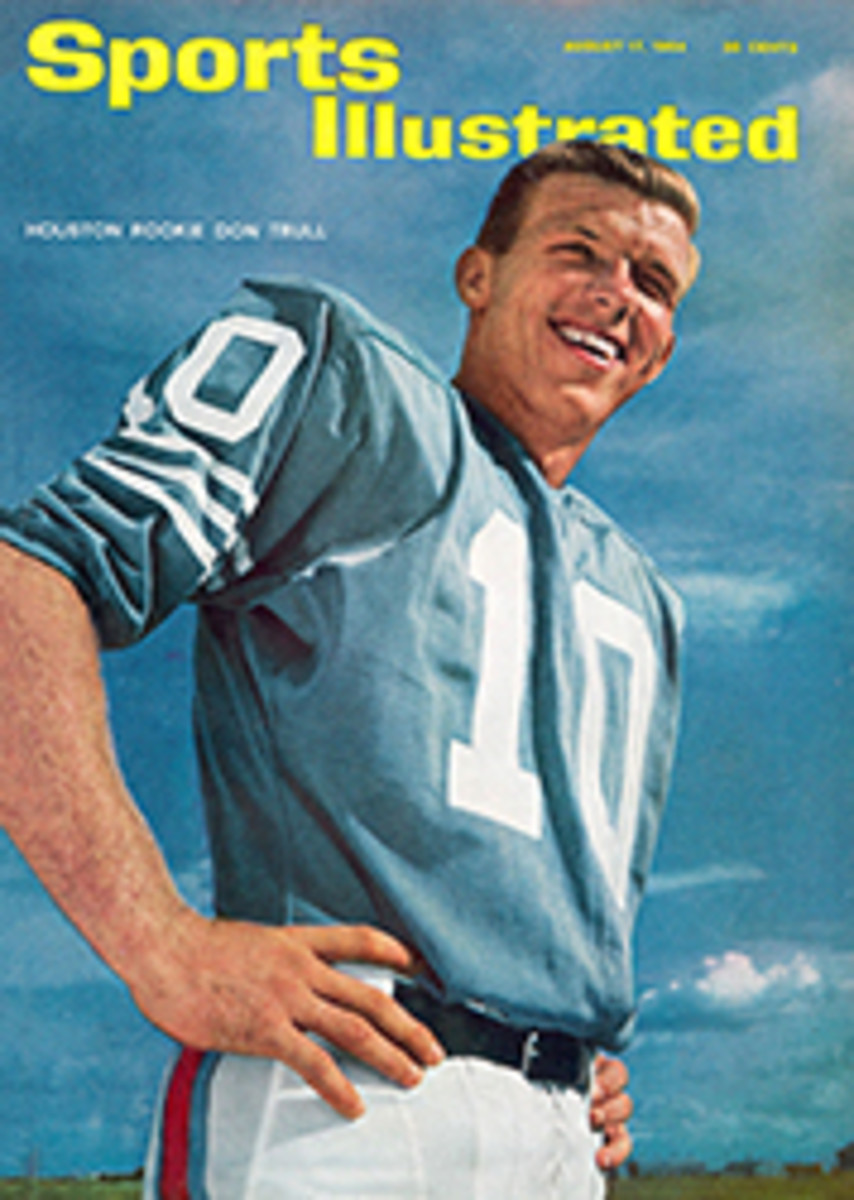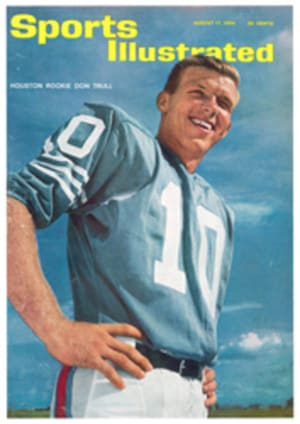
Japan zeroes in on world racing
Since the dawn of motoring, auto racing has been almost exclusively a pastime of the Western world. Last week that exclusiveness was abruptly shattered. In a historic debut in the German Grand Prix, Honda of Japan became the first Oriental entrant in bigtime international competition.
The Japanese could hardly have chosen a course tougher than the long, serpentine Nürburgring on which to start, but no one took them lightly. "They're serious people," said Ferrari Driver John Surtees, who, as an old motorcycle champion, knows all about spectacular Honda successes in that field. "Nobody must underestimate them."
Honda, which manufactures 4,500 motorcycles daily, has been devoting its attention to producing a Grand Prix car for more than two years. The man responsible for its concept is Yoshio Nakamura, 45, the slight, bespectacled chief engineer of Honda automobiles. With another Honda engineer, Hisakazu (Papasan) Sekiguchi, he worked closely on the design of the Zero fighter-plane engine of World War II. Their boss is another brilliant engineer, Soichiro Honda, founder of the firm.
The white Honda car arrived in Germany with a blazing sun painted on its nose. It had an aluminum monocoque section in the center and a tubular steel structure attached at the rear. Its engine, an exception among the present V-8 racers, was a V-12 mounted sideways behind the driver.
Nakamura was reticent about discussing the engine, but did claim a horsepower output of "more than 200." That is equal to or better than the best the competition has—and no surprise, since Honda is famous for squeezing astonishing power from its tiny racing motorcycle engines.
"At the moment the car is a traveling test-bed," said the British racing journalist Denis Jenkinson. "I don't suppose it will look anything like this next year. If the car had been introduced 12 months ago it would have been ahead of the others; now it is contemporary."
With Nakamura at the Nürburgring were four mechanics, two carburetor specialists, three research development engineers, including Papasan Sekiguchi, two French transport drivers and the car's driver, Ronnie Bucknum, 28, a California sports car man with no previous Grand Prix racing experience.
With first-line drivers already committed elsewhere, Honda had made a wise choice in Bucknum. He did everything that was asked of him on the track and a marvelous public-relations job for Honda off the course. He was asked if he would like to test-drive the Honda last March, the week before Florida's Sebring 12 Hours, where he raced a Porsche 904 with Richie Ginther. Bucknum went on to Japan, and after driving the car for two days was offered a contract for the rest of the year. It was signed when Soichiro Honda laughingly agreed to throw into the deal a 250-cc. Honda Scrambler. Like Film Star Steve McQueen (whom he taught to race sports cars), Ronnie is a motorcycle fiend.
Before official practice began, Bucknum was able to get in four laps. That was enough to reveal that the car was bottoming and the suspension urgently needed adjustment.
"We know the car won't be competitive right off but we'll be there," remarked Ronnie. "There will be no sense in going out trying to chase Jimmy Clark round, either. I'd wind up sticking it in a tree."
The Nürburgring circuit, 14.2 miles around, is the longest and most frightening big dipper in existence. It has more nightmarish twists, bends, blind corners, ascents and descents than any other course in the world, and the weather is often dirty. There are 172 corners, and between the highest point at the start and finish and its lowest point, the course falls and rises nearly 1,000 feet.
"There's so much of the Nürburgring," said Graham Hill, "that there is never time to get to know every corner. You can do 30 to 50 laps in practice else-where, but here you can gel in perhaps seven to 10."
Rather than compete first at the Nürburgring, Honda had wanted to enter the prior Dutch and French Grands Prix.
"This course," commented Nakamura, "is particularly difficult. We couldn't make it before because Japan and Europe are such a distance apart. I think one really needs three or four weeks to know it. We've only two days practice. But it is very good experience and good study. I must study more and more."
Because of typical new-car bugs, Bucknum got little study time himself. First the Honda leaked water, then oil (the ingenious Honda cure for that was an oil overflow tank consisting of a Coke can wired to the car), then swallowed a valve, requiring a change of engines. Bucknum was barely able to complete the five mandatory practice laps.
On the last two, he took the car carefully around on a rain-slicked course, clocking 13 minutes each time. "I set a record for slowness," he said, "but I know that if everything was right the car could certainly do under nine minutes."
"Next year," said an astute follower of racing, "will be a different story. You'll notice nobody laughed when they put a Coke can on the back. Honda has money, engineers and technicians, and they'll be in there fighting before long." Lotus Designer Colin Chapman, one of the men who will have to meet the Japanese challenge when it really comes, said during the practice periods when Honda was in such trouble, "I admire their courage in coming here and getting into difficulties in front of us. Most people would be afraid to do that."
The race reinforced the Nürburgring's reputation as a car killer. Of 22 cars on the grid only 10 were left running at the finish, and John Surtees repeated his 1963 Ferrari victory. By placing second, Graham Hill (BRM) moved slightly ahead of Defending Champion Jimmy Clark (whose Lotus failed) in the run for the world title.
It must be admitted that the Honda performed well beyond expectations. From the beginning Bucknum started working up through the field and by the third lap was running 12th. He held that position until the seventh lap when he moved into 11th place as Clark had to come in. He stayed there until the 11th lap, when Richie Ginther (BRM), who had pitted for a plug change, overtook him. On the 12th, after driving a fine race, he ran off the road just before the famed Karussel Bend. He was unhurt but the car was wrecked.
Bucknum had been traveling at about 130 mph. He went into a ditch, losing three wheels on the way. The fuselage collapsed. "The steering broke," Bucknum explained. "They'll never race that car again."
Still, it was an impressive beginning. One of these days there will be other cars and no doubt some stiff Japanese competition for the West.
PHOTO
SENT OFF by hopeful crew, Honda driver Ronnie Bucknum rolls onto the Nürburgring.

